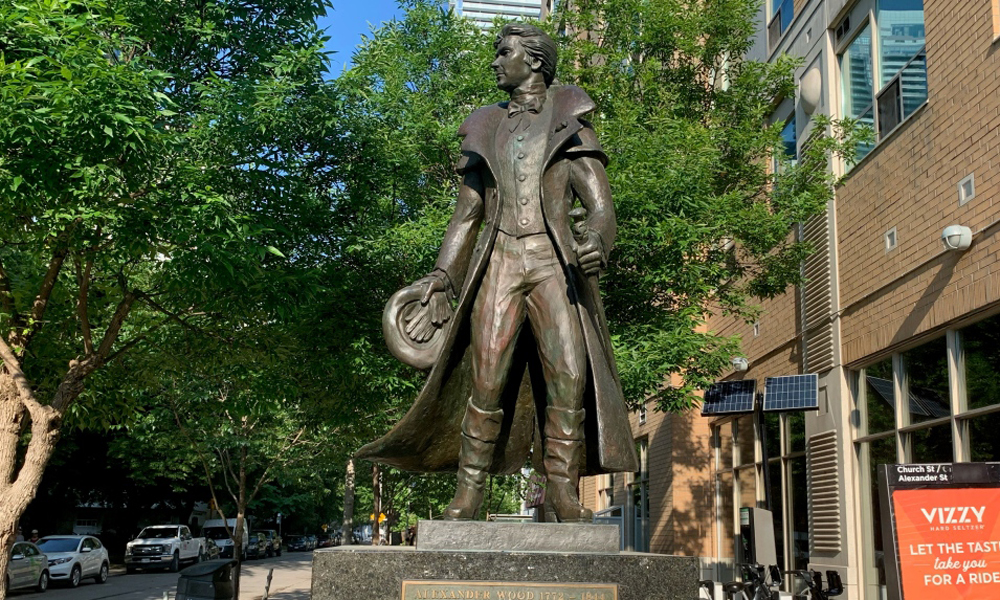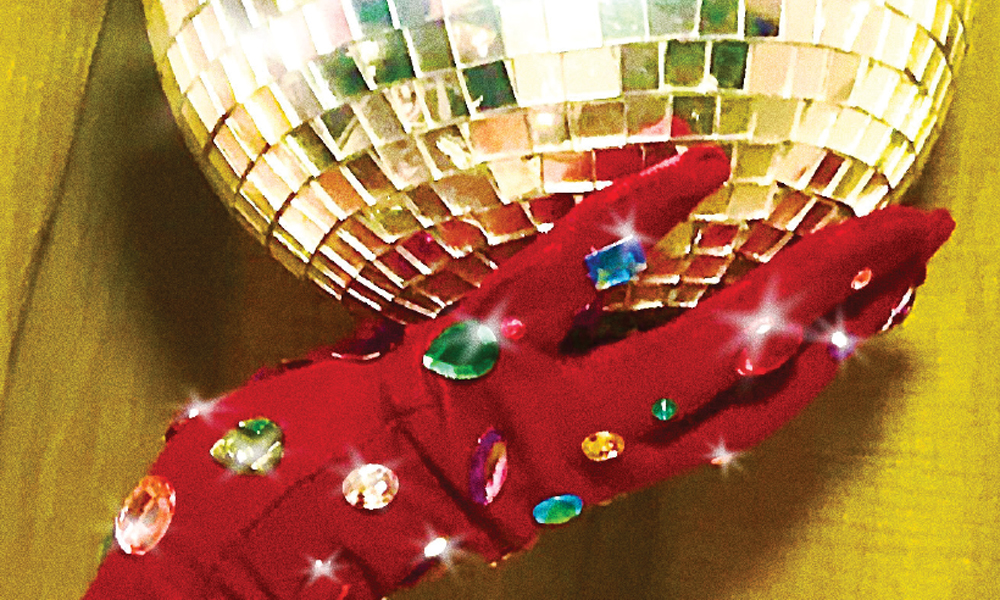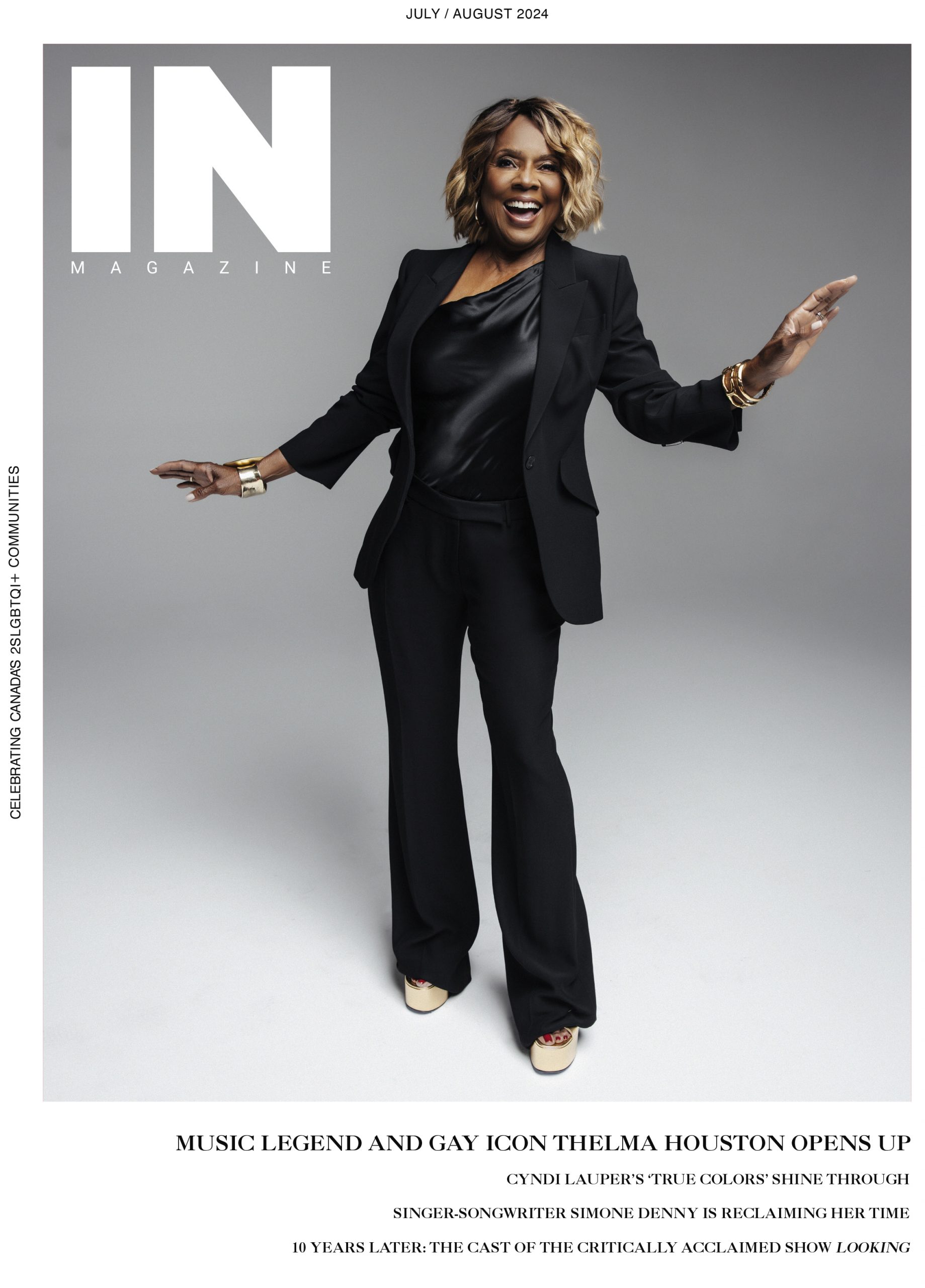“Removing the symbol would be good,” says BIA chair…
By Jumol Royes
There’s a long-overdue reckoning happening right now across Canada when it comes to residential schools and the historical figures that played a role in them. That reckoning has made its way to the heart of Toronto’s gay village.
The Church-Wellesley Village BIA is calling for the removal of the statue of Alexander Wood at the corner of Church and Alexander streets citing Wood’s connection to residential schools.
“We found out information about the individual the statue is of and the information wasn’t very good,” said BIA chair, Christopher Hudspeth, in an interview with Global News. “It showed his connection to an organization which had direct setting up of schools, which eventually became the residential schools in Canada.”
In a public statement issued last month, the BIA laid out its case for the removal of the statue – backed up in part by information from the Toronto Public Library Archives which it says is “easily accessible” – by pointing out that Alexander Wood was a “founding board member and for many years, the treasurer of the Society for Converting and Civilizing the Indians and Propagating the Gospel Among Destitute Setters in Upper Canada.”
“The Society’s actions resulted in the St. John’s Missionary to the Ojibway 1832, which in 1873 became Shingwauk Industrial Home, a large two-story wooden structure in Sault Ste. Marie, later the Shingwauk Residential School” the statement went on to say. “These are early examples of the residential school system whose purpose was to stop Indigenous people from hunting and gathering, forcing them to take on more European condition. These actions contributed to the cultural genocide of Indigenous people in Canada.”
However, Wood’s history is complicated and nuanced and not everyone is on board with his statue being removed.
A National Post torontos-gay-village-distort-history” target=”_blank” rel=”noopener”>opinion piece by writer (and IN Magazine contributor) Adam Zivo asserted that, “Calls to remove the statue of Alexander Wood from Toronto’s gay village over allegations that aim to tie him to Canada’s residential school system are misplaced and distort history.” Zivo then stated that “Wood, a 19th century gay Scottish merchant, is intimately tied to the history of Toronto and its LGBTQ community and still deserves to be commemorated” before providing deeper context and outlining a historical narrative attributed to online resources published by the Shingwauk Residential Schools Centre, “an educational project produced in partnership with the Children of Shingwauk Alumni Association (an organization composed of survivors from the Shingwauk residential school).”
But Church-Wellesley Village BIA chair Hudspeth said the intention isn’t to erase history.
“…We do not want the history of this to go away. What we want to go away is the symbol of this, and removing the symbol would be good.”
—
JUMOL ROYES is a Toronto-area storyteller, communications strategist and glass-half-full kinda guy. He writes about compassion, community, identity and belonging. His guilty pleasure is watching the Real Housewives. Follow him on Twitter @Jumol and on Instagram @jumolroyes.






POST A COMMENT